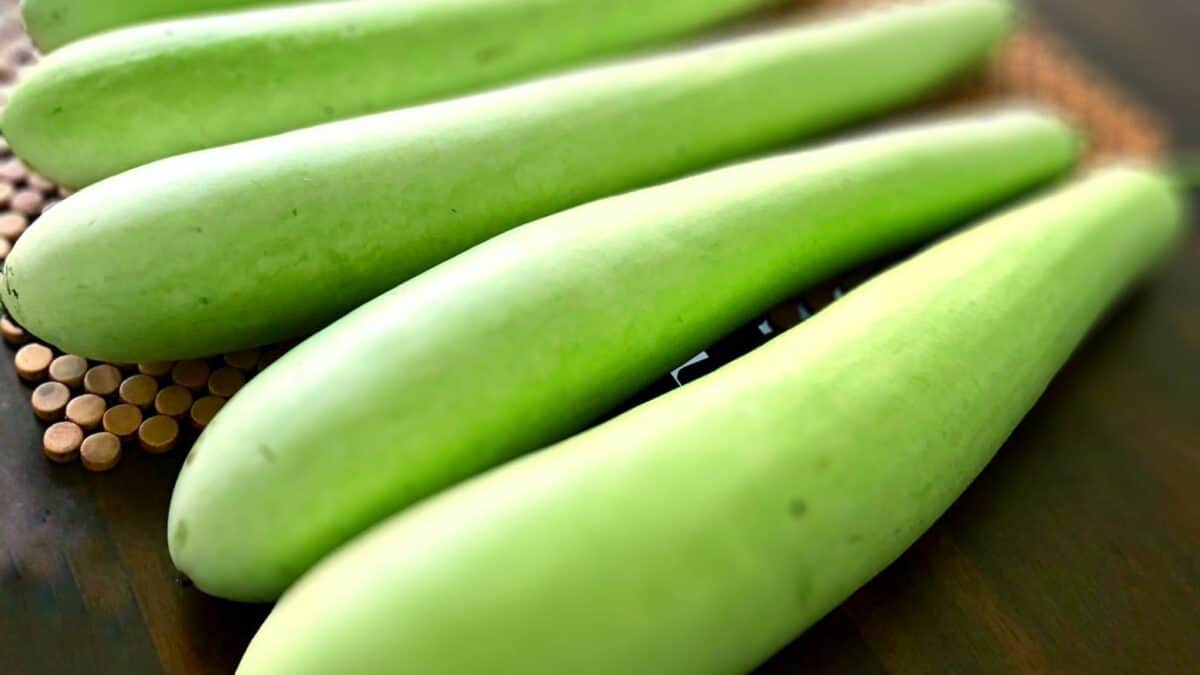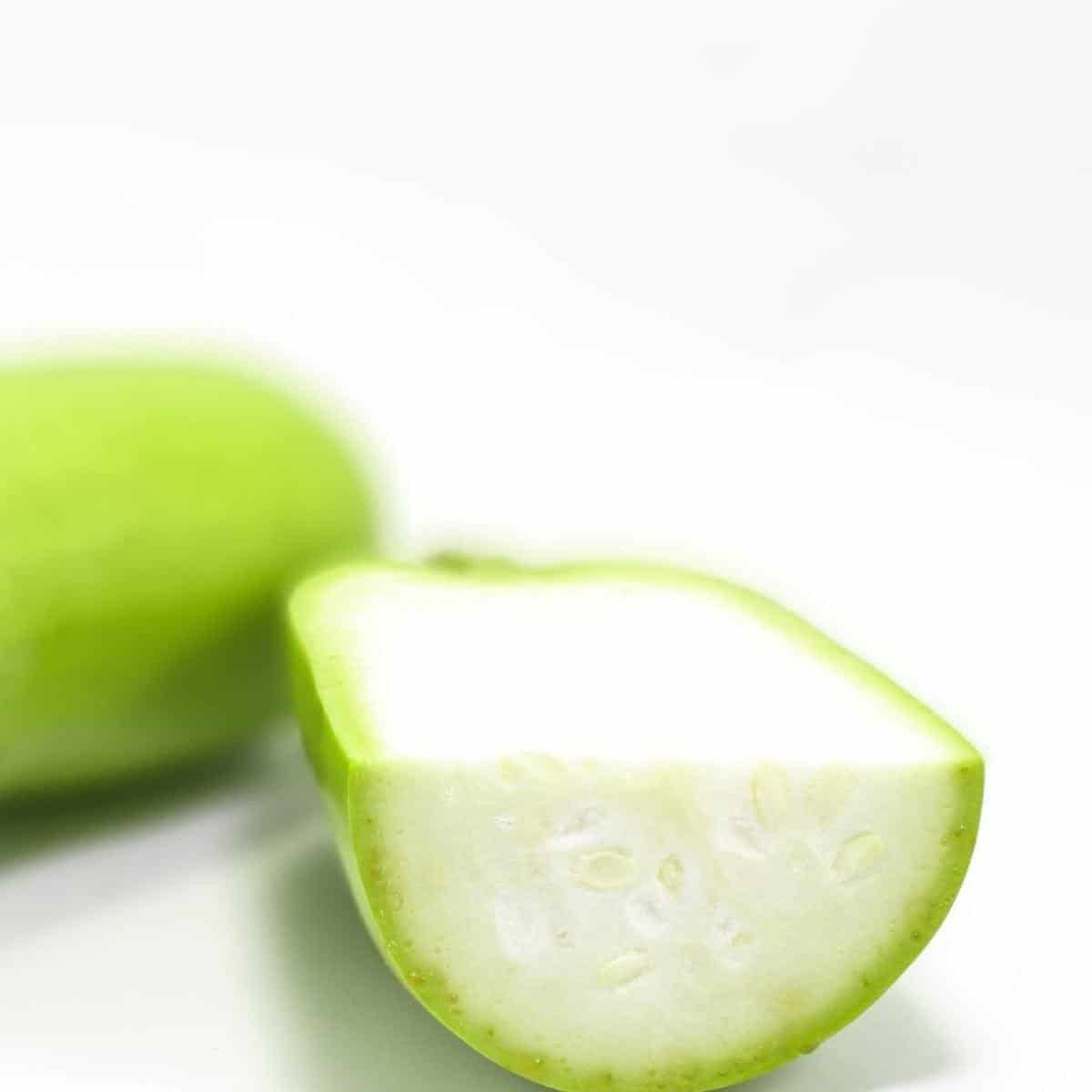Upo: The Filipino Bottle Gourd or Calabash
A Filipino upo is a type of bottle gourd grown in the Philippines from the calabash family, the Lagenaria siceraria vine.
It is typically completely green in color, whereas other calabash varieties have white marks on them. It also has the typical long shape seen in bottle gourds but not in the more rounded calabash.


Check out our new cookbook
Bitemybun's family recipes with complete meal planner and recipe guide.
Try it out for free with Kindle Unlimited:
Read for freeIn this post we'll cover:
What does upo taste like?
Upo squash has a very mild flavor – similar to zucchini. It’s not uncommon to see it grated and used in quick bread and muffins, just as North Americans use zucchini in quick bread and muffins.
How do you cook upo?
There are many cooking methods, but some of the most popular methods include stewing, frying, and adding it to soups. Upo can also be eaten raw, so it’s a versatile vegetable to have on hand.
How long do you cook upo?
Frying only takes a few minutes, while adding it to soups and stews as one of the first vegetables gives it this soft and tender taste that mixes perfectly with the broth.
Wash the upo squash under running water to remove any dirt or debris. Cut off the ends, then slice it in half lengthwise. Scoop out the seeds with a spoon, then proceed to cut it into the desired shapes for your recipe.
Upo has both small and larger seeds. The small seeds can be eaten, just like with zucchini, but the larger seeds are more like that of squash seeds and should be removed before eating.
No, the skin of upo is edible and actually adds a lot of nutrients to the vegetable. If you do choose to peel it, make sure you use a vegetable peeler as the skin is quite tough.
How to know if an upo is ripe?
Upo is ripe when it’s a deep green color and feels firm to the touch. Avoid upos that have any brown or yellow spots as this is an indication that they’re past their prime.
What’s the origin of upo?
The upo is native to Asia and has been cultivated there for thousands of years. It eventually made its way to the Philippines, where it’s now a popular ingredient in many dishes.
What’s the difference between upo and kundol?
Kundol is another type of bottle gourd that’s also native to Asia. It’s similar in appearance to upo, but it has a more rounded shape and is typically white with green streaks. As for taste, kundol is a bit sweeter than upo.
What’s the difference between upo and zucchini?
Zucchini is a type of summer squash that’s native to Italy. It has a similar shape to upo, but it’s usually smaller and has a lighter green color. As for taste, zucchini is slightly sweeter and more delicate than upo.
Popular upo seasoning and sauces
Upo is a versatile vegetable that goes well with many different seasonings and sauces. Some of the most popular include garlic, ginger, soy sauce, fish sauce, and vinegar.
Popular upo pairings
Upo pairs well with meats such as chicken, pork, and beef. It’s also often used in soups and stews, or simply served as a side dish.
Is upo healthy?
Yes, upo is a healthy vegetable that’s low in calories and high in vitamins and minerals. It’s also a good source of fiber, which can help promote digestive health.
What are the benefits of eating upo?
Some of the potential benefits of eating upo include improved digestion, better heart health, lower blood pressure, and stronger bones. Additionally, upo is a good source of antioxidants and may help protect against certain diseases.
How many calories are in upo?
One cup of upo squash contains only 36 calories. It’s also low in fat and sodium, and contains no cholesterol.
Conclusion
Upo is a delicate and delicious vegetable that melts away in your mouth when using it in soups and stews, and it’s a great type of calabash to use in your Filipino cooking.
Check out our new cookbook
Bitemybun's family recipes with complete meal planner and recipe guide.
Try it out for free with Kindle Unlimited:
Read for freeJoost Nusselder, the founder of Bite My Bun is a content marketer, dad and loves trying out new food with Japanese food at the heart of his passion, and together with his team he's been creating in-depth blog articles since 2016 to help loyal readers with recipes and cooking tips.
